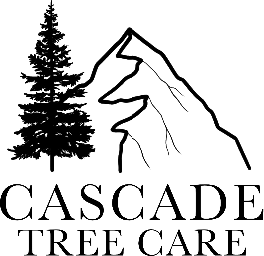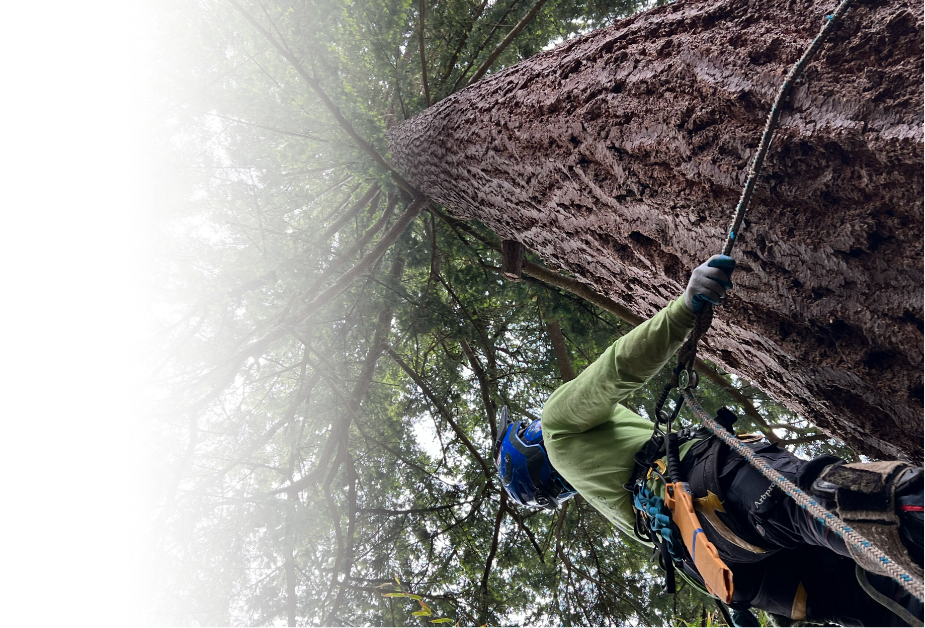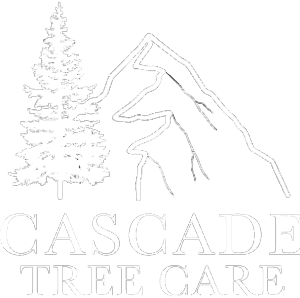How Tree Trimming Supports Balanced Growth in Crowded Tree Areas

Introduction Trees in high-density planting compete for sunlight, water, and nutrients, which can weaken their health and structure. Crowded branches also increase the risk of disease and poor growth. Proper pruning helps offset these issues, encouraging stronger, balanced development. With professional tree trimming in Edmonds, WA, homeowners can reduce overcrowding, improve airflow, and channel energy to healthy growth. Understanding how trimming benefits dense plantings is key to maintaining attractive, structurally sound trees in limited spaces. How Tree Trimming Promotes Balance in Crowded Areas 1. Removing Competition for Light Crowded trees fight with one another for light, which is vital for photosynthesis and growth. Thick or overlapping branches bar light from reaching the inner and lower branches. Pruning a tree thins the canopy by removing unnecessary or competing branches, allowing more light to penetrate deeper within the tree. This will encourage healthier leaves and more robust growth. More light exposure also boosts the health of surrounding plants, thereby promoting overall yard health. Proper trimming balances sunlight distribution so growth stunting or compromising trees does not happen, preventing the search for “tree cutting service near me”. 2. Facilitating Air Movement to Prevent Disease Poor air flow is common where trees are planted densely, creating stagnant, humid environments that encourage fungal infection and insects. Reducing thick branches promotes the flow of air in the canopy, reducing bark and leaf moisture. This helps to restrict the spread of diseases like powdery mildew or leaf spot that thrive under moist conditions. Increased ventilation also keeps away pests that reside in thick foliage. Regular trimming maintains the health of trees by providing a healthier, more ventilated environment. 3. Avoiding Structural Weakness and Damage Competing branches may grow at unsightly angles or scrape against each other, causing wounds or splitting over time. These structural defects make the branches susceptible to branch failure during stormy conditions or high winds. Pruning branches removes offending shoots and directs growth away from competition areas. Pruning weak or crossing branches makes the structural framework of the tree stronger and reduces the likelihood of costly damage. Reasonable branch spacing maintains a strong structure, especially in overplanted locations. 4. Channeling Growth Toward Improved Tree Form In heavily populated locations, natural growth can become distorted or irregular as trees stretch toward accessible light. The ensuing asymmetrical growth can detract from the appearance of the tree and produce imbalances that stress the root system. Pruning the tree channels the canopy by selectively pruning to encourage more balanced growth. This method channels energy to healthier limbs, enabling trees to grow a beautiful form even in tight areas. Properly maintaining trees with pruning enhances beauty and long-term stability. 5. Enhancing the Health of the Surrounding Landscape When trees are growing tightly against each other, they are competing with each other as well as with other elements of the landscape, like shrubs and garden beds. When this competition puts pressure on the entire yard, it affects the health of the soil and plants. Regular trimming reduces the canopy size, allowing light and resources to filter through to other plants surrounding it. Trimming also cuts down leaf litter and debris accumulation that might otherwise impact garden grounds. By managing dense tree growth, trimming fosters an equilibrial and healthy outdoor environment in general. It requires careful pruning and canopy management to achieve balanced growth in crowded tree grounds. Through trimming, homeowners are able to reduce competition for nutrients and light, increase air flow, and prevent structural damage that weakens trees. Selective trimming directs energy toward the healthier limbs, preserving the tree’s natural beauty and character. This pre-emptive care benefits not just single trees but also enhances the overall health and beauty of the landscape. With expert trimming, even areas with high concentrations can be successful with dense, well-balanced trees. Conlusion Maintain healthy, balanced trees in crowded areas with Cascade Tree Services, the best tree removal company in Redmond, WA. Call our team at 425-530-9697 today for expert trimming that supports safe, vibrant growth. 📌Trusted team, fresh name! Cascade Tree Care delivers the expert service you count on — fast, reliable, and professional. Protecting Property, Perfecting Trees. Tree Trimming for Curb Appeal: Enhancing Your Property’s Beauty Sustainable Tree Trimming Practices for Eco Friendly Landscapes The Hidden Benefits of Tree Trimming You Should Know
How Tree Removal Contractors Assess Risk Before Tree Demolition
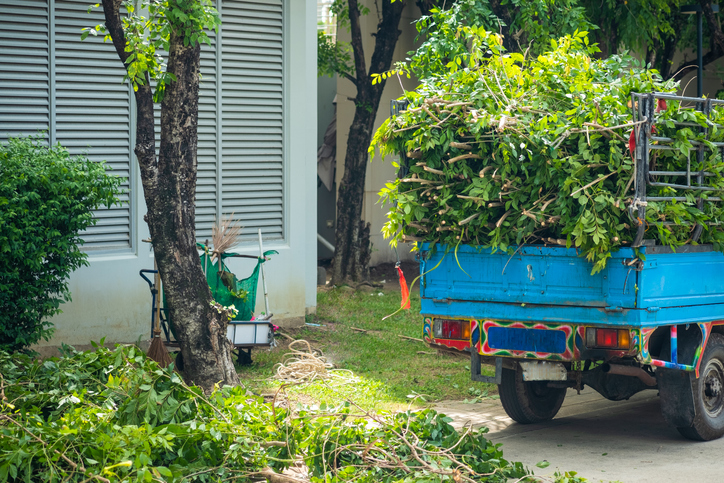
Introduction Tree felling is more than just cutting down a trunk—it requires careful planning, skill, and awareness of potential dangers. When a tree is sick, unstable, or leaning toward homes, removal must be managed to avoid damage or injury. Professional crews assess risks, choose proper gear, and follow safety protocols to minimize disruption. This is why hiring expert tree removal contractors in Bellevue, WA, is essential, as they combine technical expertise with systematic evaluation, proving that tree cutting is far more complex than it seems. How Tree Removal Experts Assess Risks Before Cutting 1. Assessing Tree Health and Stability Hazard assessment starts with assessing the overall health of the tree. Contractors look at the tree for overt indicators of sickness such as fungal infections, rotting skin, or yellow or falling leaves. Internal deterioration is typically shown by sagging branches and hollowed-out trunks, and these can affect how a tree would fall when destroyed. If a tree is abnormally leaning towards one side or has a compromised root system, it is more likely to collapse randomly. Early identification of these circumstances allows the crew to determine whether additional stabilization measures, such as cabling or temporary bracing, are necessary before cutting. This step helps in planning the whole removal process. 2. Evaluates Near Structures and Utilities Before any work gets physically done, the neighboring area surrounding the tree must be surveyed for potential obstructions. Contractors verify how close houses, garages, fences, sheds, or other valuable structures are. Overhead utilities and underground utilities are mapped not to risk cutting through or grinding against them inadvertently. Special care is taken if the tree is along public roads or pedestrian ways since other safety precautions such as temporary traffic control may be required. Such checks prevent unnecessary destruction and allow the crew to work with complete awareness of space limitations. 3. Felling Direction and Cutting Method Determination Risk assessment starts with determining the direction in which the tree will fall. These comprise natural lean, wind direction, branch structure, and area available. Tree stump removal services in Kirkland, WA, select cutting methods like the open-faced notch or conventional notch based on control and stability. Sectional dismantling is used where space is limited—cutting and lowering the tree in sections with ropes or cranes. Selecting the suitable approach eliminates the chances of accidents, saves labor and property during removal. 4. Executing Emergency and Safety Plans Even with meticulous planning, unforeseen problems could arise throughout tree removal. Therefore, contractors develop an emergency plan before starting demolition. This includes assigning designated roles to all members of the crew, demarcating escape routes, and making first-aid supplies and communication devices easily accessible. Ground spotters are typically assigned to look out for moving branches, falling objects, or changes in tree stability. These measures not only protect the workers but also reduce the risk to neighboring property owners and passersby. Tree removal takes a lot more than brute force—it is a precise procedure that starts with careful risk assessment. Trained professionals begin by examining tree health, mapping neighboring perils, and selecting an optimal felling method that ensures maximum safe removal. They utilize sophisticated equipment and protective devices while adhering to strict safety standards to control unstable circumstances. Every phase of the process is programmed to safeguard workers and property while effecting the removal in a proficient manner. For homeowners, understanding this approach underscores the value of hiring experienced professionals for such technical work. Conclusion Are you searching for a reliable tree stump removal company in Redmond, WA? Entrust your service to our experts at Cascade Tree Services for professional assessments and safe, controlled removals tailored to your landscape. Call 425-530-9697 to book your service! 📌 From trimming to removal, trust Cascade Tree Care for expert service done right — every tree, every time. Trusted Tree Care, Every Step of the Way. Recycling and Sustainable Practices in Tree Removal: Benefits Budget Friendly Solutions: Tips for Affordable Tree Removal DIY vs. Professional Tree Stump Removal: Which Is Right for You?
How Tree Trimming Services Prepare Your Property for Harsh Weather
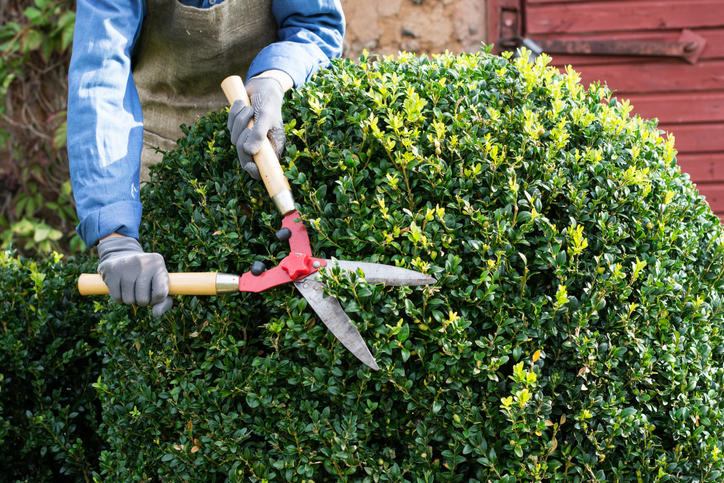
Introduction Severe weather may cause heavy losses for trees, residences, and landscapes if adequate measures are not taken beforehand. With high-speed winds, heavy snow, and ice, it can make neglected trees a serious hazard. Broken branches, falling limbs, and weakened trunks can be a source of safety hazards, damage to property, and high costs. Tree trimming services in Redmond, WA, not only create curb appeal—trees are reinforced, stabilized, and the potential for weather-related problems is diminished. By professional trimming, your property stands a better chance of enduring nature’s worst to ensure healthy growth and structural soundness. How Tree Trimming Prepares Your Property for Storms 1. Reduces the Potential for Falling Limbs Maybe the most immediate hazard in storms is falling limbs. Dead or encroaching branches can break due to snow load or be torn away by strong gusts of wind, endangering people and property. Professional trimming removes these weak points before bad weather sets in. Pruning deadwood and reducing dense crowns by arborists lowers the wind resistance, making trees less susceptible to splintering. This precautionary trim not only minimizes risks but also preserves the shape of the tree. Trimming regularly keeps branches healthy and strong, even when the weather is severe. 2. Increases Tree Health and Strength Weather resistance starts with sturdy trees. Trimming removes diseased, pest-infested, or damaged branches that would steadily undermine a tree. By removing unsound material, nutrients are directed to stronger growth, making the tree healthier overall. A well-pruned tree will be storm-resistant because its branches are balanced and less likely to split. Healthy trees are more likely to withstand root and branch rot and fungal diseases that become more severe following weather stress. Pruning helps create a stronger root-branch connection, which enhances long-term stability. 3. Prevents Power Line Damage and Building Damage During bad weather, overgrowth can take down power lines, damage roofs, or break windows. This not only disrupts everyday life but also causes dangerous situations. Tree pruning experts analyze the branch growth pattern and trim any branches that are encroaching too much on homes, fences, or cables. By creating safe clearance, the risk of weather-related accidents is greatly reduced. This type of intentional pruning also encourages greater air circulation and light penetration, resulting in healthier trees and reducing storm damage potential. 4. Extends the Life of Trees Routine pruning will significantly extend the life of your trees by reducing stress during extreme weather. Dead and broken limbs are taken off to prevent rot from spreading to the rest of the tree. Over time, this regular care incurs consistent, healthy growth that keeps trees healthy throughout the year. A longer lifespan allows trees to continue to provide shade, aesthetic appeal, and environmental benefits without posing a threat to safety. This also protects your landscaping investment by preventing premature tree removal due to weather damage. Healthy, well-manicured trees are a long-term value to your property. Getting your home ready for severe weather does not stop at securing outdoor furniture—it also means attending to your trees. Trimming prevents risk, ensures healthy development, and keeps nearby structures from being damaged. Healthy growth habits, correct clearance from buildings and utility lines, and the removal of dead or overgrown branches all make for a storm-ready landscape. Working with a professional tree stump removal company in Lynnwood, WA, ensures the safety and value of both property and people. Although extreme weather is inevitable, its impact can be curtailed by regular tree care. Conclusion Are you searching online by querying for dependable “tree cutting service near me”? Entrust your service to our experts at Cascade Tree Services. Call 425-530-9697 to schedule a trimming appointment and protect your property 📌 Your Trusted Tree Specialists — Now Serving You as Cascade Tree Care with the Same Fast, Reliable Service You’ve Always Counted On — Now Focused on Expert Tree Service. Trimming Today for Safer Tomorrows. Tree Trimming vs Topping: Understanding the Difference and Its Impact? Beyond Aesthetics: Environmental Benefits of Tree Trimming Service Sustainable Tree Trimming Practices for Eco Friendly Landscapes
Why Tree Stump Removal Is Essential for Safe Landscaping Projects?
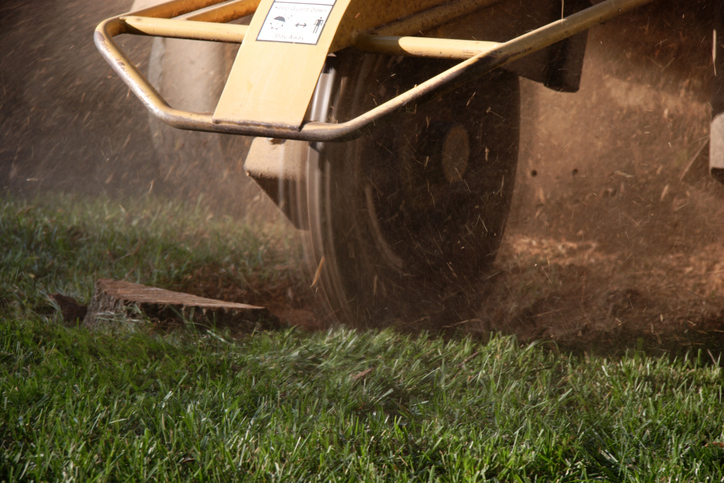
Introduction Landscaping activity will naturally try to develop purposeful yet attractive exterior spaces, but residual tree stumps can rapidly compromise both objectives. While they appear harmless in the beginning, stumps provide possibilities for safety risks, insect infestation, and interference with fresh plant growth. Residents as well as landscapers must know the hazards of leaving the stumps intact to achieve long-term effects. Services such as tree stump removal in Bellevue, WA, solve such underlying problems by removing physical and biological threats to your landscape. With the ideal solution, you are able to have a cleaner, safer, and more beautiful yard ready for any landscaping design. Why Stump Removal Is Key to Safe Landscaping 1. Precautionary Measures in the Outdoors Tree stumps pose hazardous hurdles in gardens, lawns, and sidewalks. They are tripping hazards for kids, guests, and even domestic animals. This is even more pronounced in poor lighting or if there is a covering of weeds or grass over the stump. In rented houses or business properties, such risks have the potential to become a liability if an injury is sustained. Stump removal removes the risk and frees up the area for easier use and accessibility. Early treatment of the hazard prevents an efficient landscaping process in the future because of the obstacles created by avoidable injuries. 2. Defending Your Landscape from Pest Infestation Landscapes with old tree stumps can easily become breeding sites for termites, ants, beetles, and other wood-boring insects. Once a pest infests a stump, it is easy for them to infest healthy trees, shrubs, or even wooden structures of your house. Fungal infection is also an area of frequent concern that tends to reduce neighboring plants’ strength and the health of the soil. By cutting down stumps prior to infestation by insects, you safeguard the integrity of your landscaping work. This step also ensures that you have a healthier exterior environment in terms of long-term plant well-being. 3. Optimization of Soil Condition in the Future When stumps decay, they can impact soil conditions that inhibit new growth. As wood decays, it leaches valuable nutrients into the immediate soil to ensure new plantings have fewer resources to tap into. Remaining root systems will also crossbreed with new roots of plants, preventing their growth. Expert stump removal not only removes physical obstacles but also grinds the soil to level it. It provides the best environment for planting grass, flowers, or trees without decaying wood competing for nutrients. 4. Ensuring Effective Landscaping and Building Operations Tree stumps can be serious hindrances to landscaping operations, which means one cannot install new features or regrade the land. Whether you’re planning to build a deck, lay down sod, or install an irrigation system, stumps can interfere with equipment and slow down the work. Their removal streamlines the construction process and helps contractors complete projects more efficiently. Removing them also averts surprise delays, ensuring your landscaping schedule and budget remain in sync. Tree stumps look like innocent remains of a cut tree, but they create numerous safety, plant life, soil, and property beauty risks. From inviting pests to disrupting future landscaping looks, their effects can last for years if not taken care of from the beginning. Removing the stump makes your area neater, safer, and more functional, so you can create and appreciate your yard as you please without concealed issues. No matter the purpose behind your decision, whether for curb appeal or the health of plant growth and safety, stump removal is an intelligent choice. With the help of a professional tree cutting company in Lynnwood, WA, you can get your outdoor area ready for long-term success. Conclusion Protect your yard with expert help from tree removal companies near Kirkland, WA, at Cascade Tree Services. Call us at 425-530-9697 today for safe, efficient stump removal that boosts landscaping safety and outdoor appeal. 📌We’re now Cascade Tree Care — same dependable team, same top-notch service, with a new name and renewed commitment. Out with the Old, Grow with the New DIY vs. Professional Tree Stump Removal: Which Is Right for You? Tree Stump Removal: What Every Homeowner Should Know? Signs You Need Tree Stump Removal Sooner Than You Think
Stump Grinding and Tree Removal: Stop Structural Damage
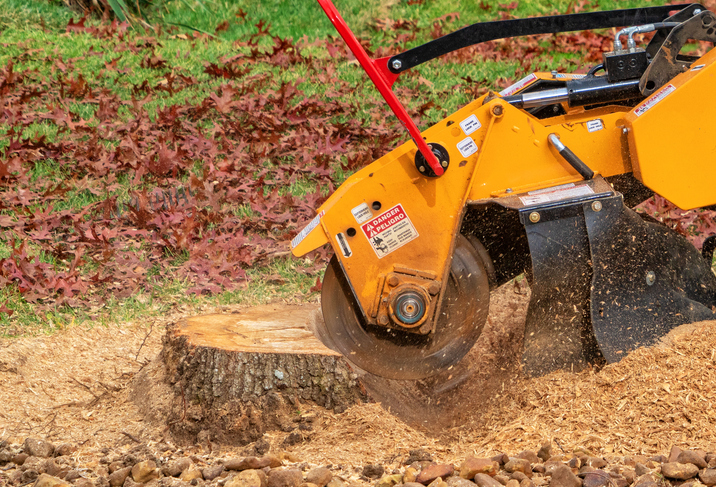
Introduction Trees add beauty and shade, but when left unmanaged, they can compromise your home’s structural strength. Old stumps and invasive roots may appear harmless on the surface, but their impact beneath can be costly. Property owners often overlook the slow but persistent threat posed by decaying stumps and growing root systems. Over time, these hidden forces disrupt foundations, pipes, and walkways. Tackling these issues with stump grinding and tree removal is more than just yard maintenance—it’s protection for your property. Prevent Structural Damage with Stump Grinding Services 1. Underground Roots Can Crack Concrete Foundations Tree roots instinctively grow toward moisture, and your home’s foundation often provides that in abundance. Over the years, roots can press against concrete, creating small fractures that eventually widen. These cracks invite moisture into basements or crawl spaces, promoting mold growth and weakening structural components. When weighing tree stump grinding vs removal, it’s important to recognize that both methods help eliminate underground root networks before they expand into vulnerable zones. By stopping root spread early, homeowners reduce the risk of slab disruptions and high repair costs. 2. Decaying Stumps Attract Wood-Destroying Pests A leftover stump is an open invitation to pests such as termites, ants, and beetles. As the wood rots, it turns into a feeding ground and nesting spot. These pests rarely remain in the stump—they spread to wood siding, beams, and floor supports. Stump grinding and removal cut off this pest gateway at the source. With no decaying wood left behind, the site becomes far less attractive to destructive insects that threaten structural framing. 3. Tree Roots Can Burst or Displace Underground Pipes Water and sewer lines are common targets for root intrusion. As roots search for moisture, they enter even the smallest cracks in underground pipes. Once inside, they grow rapidly, causing blockages, dislocations, or full breakages. These events don’t just affect plumbing—they can cause soil erosion that weakens surrounding foundations. Stump and tree clearing solutions prevent this chain reaction by removing the root source, protecting both plumbing infrastructure and structural soil stability. 4. Uneven Soil Movement From Roots Undermines Buildings Tree roots don’t just grow outward—they disrupt the soil’s natural compaction and moisture balance. As roots grow and decompose, they shift the soil’s position, leading to localized settling or heaving. These changes create uneven support under homes, garages, and driveways. Cracks in walls, doors that stick, and shifting floors may follow. By using tree-clearing services, property owners can halt this subsurface disturbance and maintain consistent ground support beneath their structures. 5. Rotting Roots Create Voids That Compromise Surface Integrity After a tree is cut down, its roots don’t disappear—they rot underground. As these roots decay, they leave behind empty pockets or soft spots in the soil. These voids create weak zones beneath sidewalks, patios, and parking areas. Over time, these surfaces may sag or collapse under weight. Tree stump removal and grinding address this issue by eliminating both the visible and underground parts of the tree, reducing the risk of future surface sinking. 6. Old Tree Stumps Obstruct Future Structural Projects Planning to install a driveway, fence, or building extension? An old stump in the way can delay progress or add significant labor costs. More importantly, building over or near stumps risks future instability as the remaining organic material decays. Tree cutting and stump disposal prepare the site properly for future construction, giving a stable, debris-free surface to build upon with confidence. 7. Tall Trees Too Close to Foundations Increase Wind Risk During storms, tall trees near structures can sway dramatically, applying pressure to the root systems and the surrounding soil. This motion can disrupt the ground’s grip on foundation edges, particularly for slab or pier-based homes. Removing problematic trees through professional tree clearing services decreases these risks and helps maintain ground compactness near critical support zones. 8. Tree Debris Promotes Soil Moisture Imbalance Leaves, twigs, and dead wood from nearby trees can affect how water interacts with the soil around your foundation. Accumulated debris traps moisture or causes runoff patterns that result in soil shifting or saturation. These conditions directly impact how your home sits on its base. Regular tree elimination and root grinding reduce organic debris, promoting balanced moisture levels and minimizing unwanted soil movement near structural supports. 9. Surface Roots Can Damage Driveways and Walkways Not all damage is underground. Shallow surface roots often lift concrete slabs, paving stones, and other hardscaping features. This not only creates tripping hazards but also reflects deeper soil distortion below. Left unchecked, these surface-level disruptions indicate more severe underground issues. Tree and root system removal stops further upheaval and restores ground uniformity. 10. Neglected Tree Growth Leads to Higher Long-Term Repair Costs Postponing action on problematic trees leads to exponential repair expenses down the line. Foundation repairs, sewer line replacements, and pest extermination come with steep costs. Investing early in tree and stump extraction minimizes these risks, saving homeowners thousands in avoidable structural damage. This preventive measure not only protects the property but also preserves its long-term market value. Property stability is more than what you see on the surface. Trees and stumps—when left unchecked—can quietly cause expensive damage through root invasion, soil disruption, and pest attraction. Cracked slabs, unstable walkways, burst pipes, and weakened foundations often trace back to hidden problems beneath. By investing in timely stump grinding and tree removal, homeowners gain stronger protection against future structural problems. It’s a smart step that keeps both the ground and your investment solid for years to come. Conclusion Protect your property with expert stump grinding and tree removal by Cascade Tree Services. Prevent damage before it starts—call us now at 425-530-9697 for fast, professional service you can trust. 📌 Your Trusted Tree Specialists — Now Serving You as Cascade Tree Care with the Same Fast, Reliable Service You’ve Always Counted On — Now Focused on Expert Tree Service.
Tree Removal Services for Trees Near Power Lines or Buildings
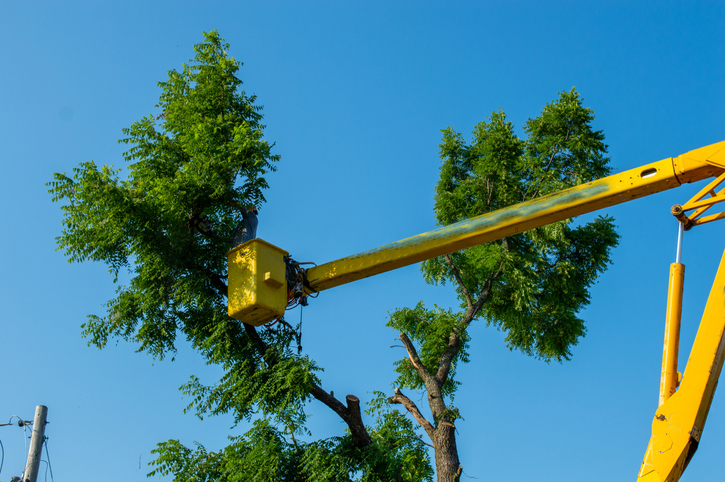
Introduction Trees growing too close to power lines or buildings aren’t just an inconvenience—they’re a serious hazard. High winds, root spread, or falling limbs can interrupt power, damage roofs, and create fire risks. What looks like a minor overhang or lean today could cause thousands in repairs tomorrow. Removing trees in tight spaces requires skill, precision, and the right equipment to avoid accidents and protect nearby structures. Trusted tree removal services in Bellevue, WA, help property owners eliminate these risks while maintaining safety and compliance with local regulations. Tree Removal Near Power Lines or Structures Explained 1. Overgrown Trees Pose Electrical Hazards Branches that touch or hang near power lines can cause short circuits, power outages, and even fires during storms. In wet conditions, electricity may arc from lines to trees, putting people and nearby structures at risk. Utility companies often require property owners to maintain clearance between vegetation and lines, but not all trees can be trimmed safely. Some must be removed entirely to prevent future contact. A licensed removal service knows how to handle this work without disrupting service or creating new dangers. 2. Tree Roots Can Damage Building Foundations It’s not just overhead growth that causes problems—tree roots can wreak havoc below ground. Roots seeking moisture often travel toward plumbing, basements, or concrete slabs. Over time, they apply pressure that cracks walls, shifts foundations, and clogs drainage lines. When a tree is growing too close to a home or business, removal may be the only solution to avoid structural damage. Professional crews identify at-risk trees and remove them completely, including root systems that could cause long-term harm. 3. Controlled Removal Prevents Damage to Nearby Structures Taking down a tree near a building or fence requires more than cutting from the base. One wrong move can cause branches or trunks to crash onto the roof, windows, or walkways. Skilled crews use rigging systems, cranes, and sectional cutting to take trees down safely in tight quarters. This careful approach reduces debris scatter and avoids unplanned impact on surrounding areas. Controlled removal protects the integrity of the property while clearing dangerous growth. 4. Removal Clears Access for Repairs and Renovations Trees that crowd buildings often block access to key maintenance zones like gutters, roofs, or siding. They can prevent painters, roofers, or contractors from doing their jobs properly. In many cases, owners discover that removal is necessary before a repair or remodel can begin. Once removed, the area opens up for scaffolding, ladder placement, and construction staging. This not only speeds up other projects but also improves long-term building upkeep. 5. Local Codes Often Require Risk Tree Removal Many municipalities have safety ordinances that require the removal of trees posing a threat to power lines or nearby structures. Ignoring these rules can lead to citations, fines, or forced removal orders. A professional service is familiar with local codes and can perform the work legally and safely. They also manage permits and debris disposal, keeping the process efficient and within compliance. Proactive removal keeps your property safer and avoids future legal complications. Trees near power lines and buildings demand more than casual trimming. Ignoring the risk can lead to structural damage or high service fees that far exceed the tree trimming cost in Bellevue, WA. Whether the threat is above or below ground, professional removal helps prevent utility disruptions and safety issues. Experts use proper tools and techniques to take down hazardous trees without harming nearby structures. Early action gives property owners more control over maintenance and reduces long-term costs. Conclusion Don’t let risky trees threaten your home or power lines—choose expert tree removal near Edmonds, WA, with Cascade Tree Services. Get in touch with us at 425-530-9697 for safe, skillful solutions today. 📌 Your Trusted Tree Specialists — Now Serving You as Cascade Tree Care with the Same Fast, Reliable Service You’ve Always Counted On — Now Focused on Expert Tree Service. Don’t Miss These Reads Top Warning Signs That Indicate You Need Tree Removal Services The Cost of the Best Tree Removal Services: What to Expect How Tree Removal Services Can Increase Your Property’s Value
Tree Removal Services That Prepare Land for New Construction
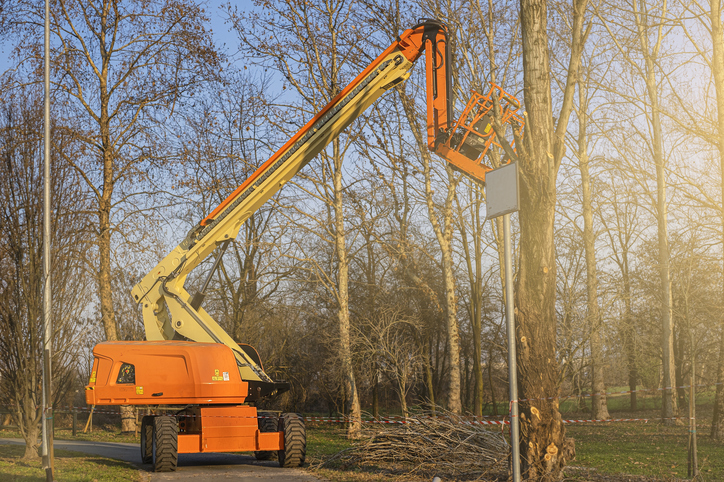
Introduction Construction projects require a clean, stable, and obstacle-free site before any building begins. Trees, stumps, and overgrown vegetation can slow down progress, damage equipment, and complicate grading. Many property owners underestimate the time and effort needed to clear a lot properly. Removing large trees and deep roots isn’t just about cutting—it’s about making way for solid foundations, accurate layouts, and safer job sites. With trusted tree removal services in Bothell, WA, land can be transformed into a build-ready space with fewer delays and hidden issues. Tree Removal to Clear Land for Future Construction Plans 1. Clearing Trees Helps Define Buildable Space Trees often occupy areas targeted for construction, making it difficult to visualize building dimensions or access work zones. Removing these trees opens up the lot and exposes the full footprint available for design. This clarity helps contractors mark property lines, utility paths, and drainage routes more precisely. It also reveals elevation changes or problem areas that need grading. With trees out of the way, layout work moves faster and with better accuracy. 2. Root Systems Can Interfere With Foundations Even after a tree is cut down, its roots can continue to pose problems underground. Old root systems may decay slowly, creating soft spots or voids that affect foundation stability over time. In some cases, large roots must be extracted to allow proper trenching for footings or utilities. Leaving roots behind increases the risk of shifting soil or pipe blockages in the future. Professional removal includes dealing with root zones, making the site more reliable for long-term building use. 3. Safe Removal Reduces Damage to Equipment and Crews Untrained attempts to remove large trees or stumps can lead to injuries and damaged machinery. Construction-grade equipment isn’t always designed for forestry tasks, and using it on dense growth may result in downtime or costly repairs. Professionals use the right tools for controlled felling, cutting, and hauling without disturbing nearby structures or terrain. Removing obstacles the right way protects both the crew and the tools needed for ongoing work. It’s a critical safety step during the early phases of land development. 4. Clearing Promotes Better Drainage and Soil Prep Tree removal often exposes soil that was shaded, compacted, or root-bound for years. Once the trees are gone, the lot can be properly graded to manage water runoff and prevent flooding. Stumps and roots that trap moisture or block flow channels can be replaced with engineered drainage solutions. This stage is also key for testing soil quality and applying necessary amendments. A well-prepared surface improves structural support and reduces future issues with erosion or poor compaction. 5. Local Regulations May Require Proper Tree Disposal Many cities and counties have guidelines about tree removal, especially when preparing lots for new construction. Some require permits, erosion control, or designated disposal methods. Ignoring these rules can lead to penalties or delays. Hiring professionals who understand local codes helps avoid these problems. A licensed crew not only handles removal efficiently but also disposes of debris according to area standards, keeping your project on track and in compliance. Preparing a lot for construction takes more than just a chainsaw and a dump truck. Ignoring roots or debris can lead to unexpected issues and drive up the tree cutting cost in Bellevue, WA. Trees and roots must be removed with precision to avoid long-term problems with foundations, drainage, and access. Expert removal services protect workers, equipment, and timelines while complying with regulations. The cleared land becomes a blank canvas for safe, stable building work. Starting strong with proper site prep saves time, money, and future complications. Conclusion Start your construction project right with expert tree trimming near Edmonds, WA, from Cascade Tree Services. Call our experts at 425-530-9697 today for safe, efficient land clearing that speeds up site prep. 📌 Your Trusted Tree Specialists — Now Serving You as Cascade Tree Care with the Same Fast, Reliable Service You’ve Always Counted On — Now Focused on Expert Tree Service. Don’t Miss These Reads Top Warning Signs That Indicate You Need Tree Removal Services The Cost of the Best Tree Removal Services: What to Expect How Tree Removal Services Can Increase Your Property’s Value
When to Hire a Tree Cutting Company for Overgrown Lot Cleanup
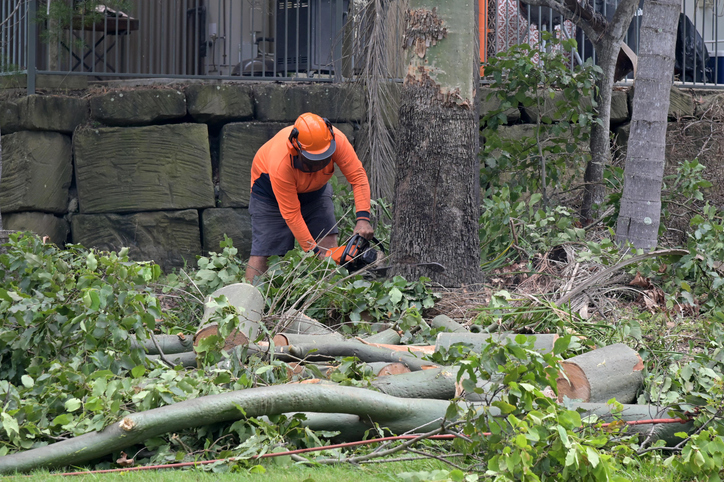
Introduction Overgrown lots can quickly become more than just an eyesore. Dense vegetation, fallen branches, and tangled undergrowth make it difficult to access or use the space. These conditions not only block visibility and utility but can also attract pests, create fire risks, and violate local codes. Proper lot cleanup isn’t just about appearance—it’s about restoring function, safety, and long-term value. A reliable tree cutting company in Kirkland, WA, can tackle everything from thick brush to dangerous trees, turning an unmanageable lot into usable, cleared ground with minimal disruption. When to Call Tree Cutters for Clearing Overgrown Lots 1. When Dead Trees Threaten Nearby Structures Dead or dying trees pose a serious hazard when located near homes, garages, or fences. Weakened trunks and limbs are more likely to snap during storms or high winds, leading to property damage or personal injury. Identifying which trees are unstable requires expert evaluation, especially if root damage or internal decay isn’t visible. A professional crew can assess the risk and remove dangerous growth before it becomes a liability. Removing dead trees is one of the first steps in reclaiming an overgrown property and improving safety. 2. If Thick Brush Blocks Access or Visibility Lots with thick underbrush or unchecked growth often become inaccessible, especially if trails, driveways, or fence lines are overrun. Shrubs and vines can quickly engulf entryways and utility lines, making routine upkeep impossible. Clearing out this brush not only improves access but also reveals hidden hazards like sharp debris, unstable terrain, or pest activity. Professionals use brush cutters, chippers, and grading tools to clear the space efficiently. This allows property owners to see the full extent of what needs to be done next. 3. During Site Prep for Construction or Landscaping Before starting any major construction or landscaping work, the site must be cleared of unwanted trees, stumps, and thick ground cover. Attempting this manually without the right tools can delay timelines and increase labor costs. Tree cutting professionals come equipped with the necessary equipment to remove heavy growth and haul debris quickly. They also know how to protect trees that should stay while eliminating those that interfere with the design. Proper lot prep creates a clean foundation, making future work faster and more accurate. 4. When Invasive Plants Have Taken Over Invasive species like blackberry bushes, ivy, or non-native trees can take over entire lots if left unmanaged. These plants spread aggressively, choking out native vegetation and creating dense, thorny barriers. Cutting them back without removing roots usually leads to rapid regrowth. A skilled team knows how to identify invasives and apply targeted removal strategies that stop the spread. This not only improves the health of your landscape but also brings local ecosystems back into balance. 5. If Local Codes Require Lot Maintenance Many cities have ordinances that require vacant lots or residential properties to remain clear of fire hazards, pest-attracting debris, or excessive growth. Ignoring these rules can result in fines or forced cleanup orders. Hiring a professional tree-cutting crew helps maintain compliance and avoid potential penalties. Crews also know how to dispose of green waste according to local regulations. Staying on top of vegetation control keeps the property in legal standing and prevents costly enforcement actions. Overgrown lots present more than cosmetic concerns—they carry safety risks, legal obligations, and environmental challenges. From hazardous trees to thick brush and invasive species, a neglected lot can quickly become unmanageable. Services like tree stump removal in Bellevue, WA, help prevent damage, protect plants, and restore usable space. Professional cleanup makes the land safer, cleaner, and more functional for a variety of uses. With the right approach, even the wildest lot can be transformed. Conclusion Tackle overgrowth with expert tree trimming near Redmond, WA, from Cascade Tree Services. Contact us now at 425-530-9697 for fast, safe cleanup that restores access, safety, and curb appeal. 📌 Your Trusted Tree Specialists — Now Serving You as Cascade Tree Care with the Same Fast, Reliable Service You’ve Always Counted On — Now Focused on Expert Tree Service.
Tree Root Removal Service That Solves Persistent Drain Blockages

Introduction Clogged drains are more than just inconvenient—they often point to deeper underground problems. Many homeowners assume the issue lies in grease buildup or debris, only to discover the true culprit is far more invasive. Tree roots, in search of moisture, can infiltrate even the smallest cracks in sewer or drainage lines. Once inside, they expand quickly and trap waste, causing repeated clogs and backups that chemical solutions can’t fix. That’s where a professional tree root removal service in Redmond, WA, becomes critical, offering long-term relief by addressing the source of the blockage directly and precisely. How Tree Root Removal Services Prevent Drain Clogs 1. Why Tree Roots Invade Underground Pipes Tree roots are naturally drawn to moisture-rich environments, making your underground drainage and sewer pipes ideal targets. Over time, small root hairs find their way into tiny cracks or joints in the piping. Once inside, they absorb water and rapidly grow, creating dense root masses that block water flow. These roots also trap other debris like paper and grease, making the blockage worse. Left untreated, this growth can crack or completely collapse the pipe, requiring costly excavation and repair. 2. Common Warning Signs of Root Intrusion Persistent slow drains, especially in multiple areas of the home, often signal root blockage in the main line. Gurgling noises from toilets, foul odors, or water backing up in tubs and sinks are other telltale signs. Frequent snaking or chemical treatments that offer only temporary relief point to a deeper problem. Tree roots grow back quickly, especially if not fully cleared from the system. Recognizing these signs early allows you to take action before a complete blockage leads to flooding or structural damage. 3. How Root Removal Services Restore Flow Permanently When looking for a dependable tree cutting service near me, it’s important to understand how professional root removal addresses more than just surface issues. Specialized solutions use tools like hydro jetting and root saws to break apart and flush out intrusive root growth. These high-pressure methods clean the interior of the pipes thoroughly without causing structural harm. Many services also perform video inspections before and after to confirm that the root mass is completely cleared. By eliminating the cause—not just the symptoms—these methods restore full drainage. After cleaning, pipe lining or sealing helps block future root intrusion. 4. Environmental and Structural Benefits of Root Clearing Beyond improving drainage, root removal helps protect the surrounding soil and infrastructure. Root-filled pipes can leak or burst, releasing wastewater into the ground, which can contaminate nearby soil and water supplies. This leakage also weakens soil stability around foundations and driveways. Removing the blockage and sealing the pipe prevents further root attraction and water seepage. Keeping the system intact reduces environmental damage and protects the structural integrity of your property. 5. Preventing Future Root Intrusion in Drain Lines Once roots have been cleared, preventive steps can reduce the risk of future issues. Regular camera inspections help detect early signs of regrowth. Installing physical barriers between trees and pipelines during landscaping projects can redirect root paths. For vulnerable lines, applying root-killing foam annually helps suppress small regrowths before they become blockages. Tree selection also matters—planting deep-rooted species far from drainage lines can minimize intrusion risk. Proactive steps after removal help maintain healthy pipes and avoid major plumbing emergencies. Tree roots are one of the most persistent and damaging causes of drain blockages. Traditional drain cleaning methods often fail because they don’t remove the root itself. A focused removal service targets and clears these intrusions at the source. This not only restores full drainage but also protects your pipes and property from further issues. Investing in proper root clearing means fewer clogs, less stress, and greater long-term stability. Conclusion Stop recurring drain issues at the source. Cascade Tree Services offers expert root removal without the high tree removal cost in Bothell, WA. Get in touch with us at 425-530-9697 now for fast, targeted solutions. 📌 Your Trusted Tree Specialists — Now Serving You as Cascade Tree Care with the Same Fast, Reliable Service You’ve Always Counted On — Now Focused on Expert Tree Service.
The Environmental Benefits of Local Tree Pruning Services
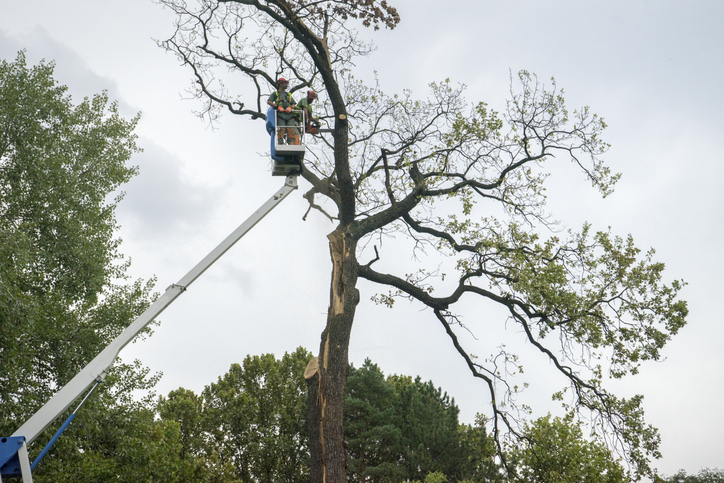
Introduction Urban environments face constant pressure from pollution, construction, and extreme weather shifts. Amid these challenges, well-maintained trees serve as quiet defenders of air quality, stormwater control, and wildlife protection. Professional pruning keeps them strong, responsive, and biologically active. Through precise cuts and timing, tree care specialists help urban green spaces thrive. Trusted tree pruning services in Bellevue, WA, contribute far more than curb appeal—they support healthier ecosystems in every neighborhood. How Local Tree Pruning Services Help the Environment 1. Pruned Trees Absorb More Carbon and Produce Better Oxygen Trees naturally absorb carbon dioxide and release oxygen, but overgrown or diseased limbs reduce this capacity. When dead branches are removed, the tree directs more energy to healthy leaf growth. This increases its ability to capture carbon and generate oxygen-rich air. Regular pruning improves the leaf-to-wood ratio, allowing trees to function more efficiently. Over time, these healthy trees offer stronger contributions to carbon reduction efforts in cities. 2. Pruning Supports Wildlife Habitats Without Overcrowding Birds, squirrels, and insects rely on trees for food and shelter, but overcrowded branches make trees unstable and unsafe. Strategic pruning preserves key limbs for nests while reducing excess weight and preventing collapse. Wildlife thrives when trees grow in structurally sound ways that support long-term survival. Removing diseased or dying sections also protects native species from harmful fungi or pests. A balanced canopy attracts a wider variety of species while keeping the tree healthier for future habitat use. 3. Healthier Trees Filter More Rainwater and Stabilize Soil Tree roots absorb rainfall and reduce runoff, but a weakened canopy can throw this natural system off balance. When branches are trimmed correctly, the tree’s overall structure supports better water absorption. With less surface stress, roots grow deeper and anchor more firmly in the soil. This reduces erosion and prevents sediment from washing into local waterways. Pruning also helps trees resist wind damage, keeping soil disruption to a minimum during storms. 4. Controlled Tree Growth Prevents Overcrowding and Disease Spread Trees growing too close together compete for sunlight, nutrients, and air circulation. This crowding often leads to weakened immune responses and faster disease transmission. Pruning opens up space between branches, allowing light and airflow to reach more of the canopy. It also limits the spread of fungal infections and insect infestations that move quickly through dense growth. Controlled branch spacing through expert pruning improves the health of entire tree groves and urban forest zones. 5. Urban Cooling Is Stronger with Managed Tree Canopies Trees help reduce city heat by shading sidewalks, homes, and roadways. But when left unmanaged, dense canopies can block airflow and trap heat instead of cooling the area. Targeted pruning improves light diffusion and boosts cooling efficiency. Compared to reactive solutions, regular maintenance is far less disruptive—and far more affordable—than facing the full tree removal cost in Bellevue, WA, later on. Properly trimmed trees provide effective shade while allowing ventilation, lowering surface temperatures, and easing neighborhood energy demand. Tree pruning is not just an aesthetic task—it has measurable benefits for ecosystems and urban living. It improves tree strength, supports biodiversity, and protects water and soil systems. Professionally pruned trees last longer and perform better in their environmental roles. Their benefits multiply over time, reaching far beyond the property where they’re planted. Investing in regular pruning is a smart way to support nature’s role in cleaner, cooler, and more livable cities. Conclusion Support a greener community with expert tree trimming near Kirkland, WA, by Cascade Tree Services. Connect with our experts at 425-530-9697 today for eco-friendly care that protects trees, wildlife, and your property. 📌 Your Trusted Tree Specialists — Now Serving You as Cascade Tree Care with the Same Fast, Reliable Service You’ve Always Counted On — Now Focused on Expert Tree Service. Don’t Miss These Reads Top 5 Benefits of Professional Tree Pruning Services The Role of Tree Pruning Services in Maintaining a Healthy Canopy The Environmental Benefits of Professional Tree Pruning Services
